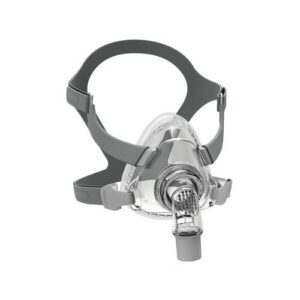Sleep Apnea
Sleep Apnea
Cause of breathing disruptions
There are several types of sleep apnea, categorized by the cause of breathing disruptions.

The most common type is called Obstructive Sleep Apnea.
Obstructive Sleep Apnea
- Need Assistance?
Call: 0311 11 SLEEP (75337)

Symptoms of Sleep Apnea
Frequent symptoms of obstructive sleep apnea include:
- Excessive daytime sleepiness
- Loud snoring that leads to gasping or choking
- Headaches in the morning that may persist for several hours after waking up
- Dry mouth upon awakening
- Restless sleep with periods of wakefulness during the night
- Increased need to get up from bed to urinate
- Irritability or frustration
- Poor concentration
Certain symptoms of obstructive sleep apnea may not be immediately noticeable to the person with the condition. For example, abnormal breathing and snoring may only come to a person’s attention after they are observed by a bed partner.
Many of the symptoms of obstructive sleep apnea can also be caused by other health issues, so the condition cannot be diagnosed by symptoms alone.
Causes of
Obstructive Sleep Apnea
In people with obstructive sleep apnea, the muscles in the back of the throat relax during sleep, reducing space for air to pass through. Snoring occurs as the airway narrows, and when the airway is obstructed, a person fails to get enough oxygen. The lack of oxygen causes partial or complete awakenings in order to restore airflow. These breathing disruptions happen repeatedly during sleep.
Risk Factors for Obstructive Sleep Apnea
The primary risk factors for obstructive sleep apnea are related to age, sex, body weight, and certain anatomical features of the head and neck area.
- Age: The risk of developing obstructive sleep apnea increases with age until a person is in their 60s and 70s.
- Sex: Men or people assigned male at birth are generally more likely to have obstructive sleep apnea, especially in the earlier stages of adulthood.
- Head and neck anatomy: Obstructive sleep apnea occurs more frequently in people who have specific anatomical features including a larger tongue and a shorter lower jaw.
- Body weight: Multiple studies have found a correlation between a higher body mass index (BMI) and an elevated risk of developing obstructive sleep apnea.
Studies have identified associations between various other factors and an increased likelihood of having OSA, but further research is needed to clarify their effect on the development of OSA.
- Cigarette smoking: Some research has found a noticeably higher risk of obstructive sleep apnea in people who smoke cigarettes compared to people who have quit or never smoked.
- Hormone abnormalities: Hormone conditions like an underactive thyroid or excess production of growth hormone may increase the risk of OSA12 by causing swelling of tissue13 near the airway or by contributing to a higher body mass index.
- Sleeping position: Sleep apnea may develop or be worsened when people sleep on their back14 because of how that sleeping position affects the shape and positioning15 of the tissue around the airway.
- Family history of sleep apnea: There are some indications that a family history of OSA can increase a person’s risk of obstructive sleep apnea, which may relate to anatomical features in the head and neck that are shared among family members.
- Nasal congestion: Difficulty breathing through the nose has been linked with a higher likelihood of having OSA.
- Using alcohol and some medications: Alcohol and some prescription and narcotic drugs are associated with an elevated risk of obstructive sleep apnea.
- Certain medical conditions: People with some medical problems, including several hearts and lung conditions, may have a greater tendency to develop OSA.
Diagnose - Sleep Study
A sleep study is necessary to diagnose sleep apnea. The most dependable kind of sleep study is called polysomnography, which is conducted during an overnight stay at a specialized sleep laboratory. During polysomnography, multiple sensors are used to track breathing, awakenings, oxygen levels, muscle movement, sleep stages, and other aspects of sleep. A sleep study can determine if breathing is abnormal and differentiate between obstructive and central sleep apnea. For OSA, polysomnography may involve either one or two visits to a sleep clinic. An at-home sleep study for obstructive sleep apnea is an option for certain patients who are believed to have more severe OSA. Taking an at-home sleep apnea test may be more convenient, but the results must still be interpreted by a health professional.

Treatments for Obstructive Sleep Apnea
Positive airway pressure (PAP) therapy is a treatment offered to almost all people with obstructive sleep apnea. PAP therapy keeps the airway open with pressurized air that is pumped from a machine through a tube and a mask worn on the face.
Their air pressure is carefully calibrated in a process called titration that occurs during a sleep study.
A common type of PAP therapy uses a continuous positive airway pressure (CPAP) device that sends a stream of air that is always set to the same pressure level. Other types of PAP devices, such as bi-level positive airway pressure (BiPAP) and auto-titrating positive airway pressure (APAP), provide variability in the amount of air pressure.
An additional component of treatment for obstructive sleep apnea involves lifestyle changes to help manage symptoms. These suggestions may include:
- Reducing BMI by losing weight
- Getting regular exercise, which may decrease OSA symptoms even without weight loss
- Altering sleeping position to avoid back sleeping
- Reducing alcohol consumption
